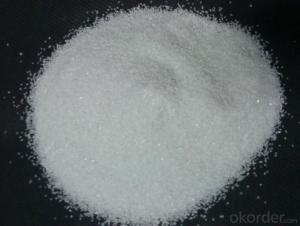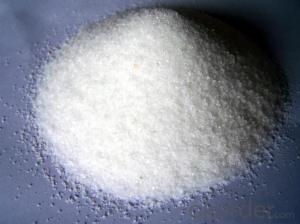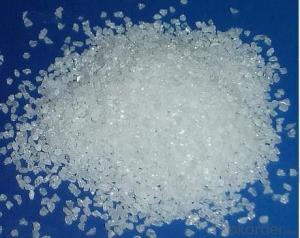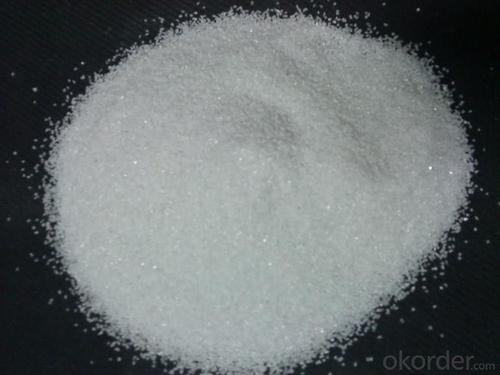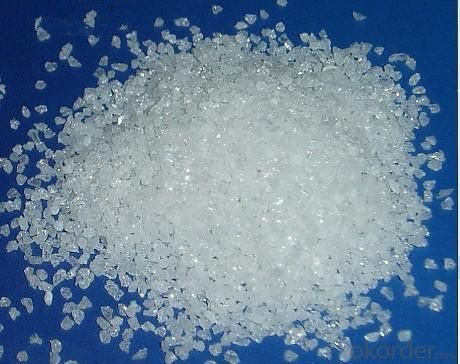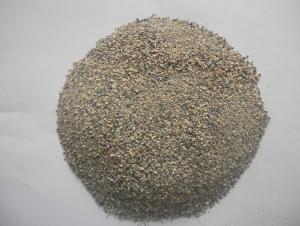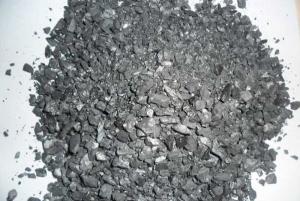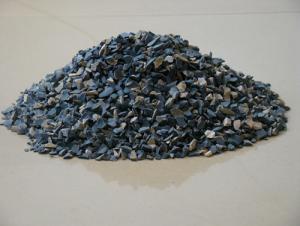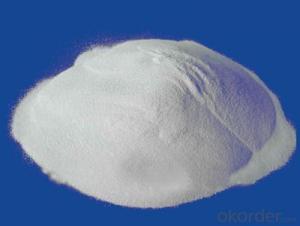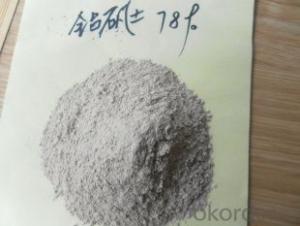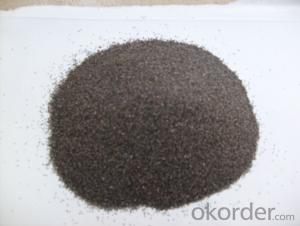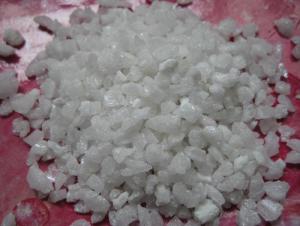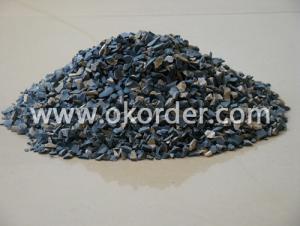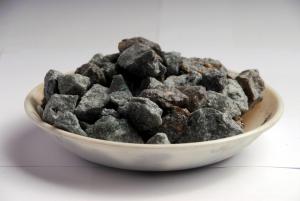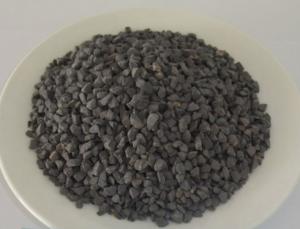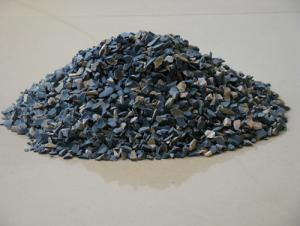Raw Materials for Refractory - Abrasive White Fused Alumina 180#-220# WFA for Abrasive
- Loading Port:
- Tianjin
- Payment Terms:
- TT OR LC
- Min Order Qty:
- -
- Supply Capability:
- 1000MT m.t./month
OKorder Service Pledge
Quality Product, Order Online Tracking, Timely Delivery
OKorder Financial Service
Credit Rating, Credit Services, Credit Purchasing
You Might Also Like
Specification of Abrasive White Fused Alumina
Item | Chemical Composition | |||
Al2O3 min | NaO2 max | SiO2 max | Fe2O3 max | |
12#-60# | 99.15 | 0.26 | 0.08 | 0.05 |
60#-100# | 99.15 | 0.28 | 0.09 | 0.06 |
120#-150# | 99.1 | 0.29 | 0.10 | 0.08 |
180#-220# | 99.05 | 0.31 | 0.12 | 0.1 |
230#-800# | 98.5 | 0.5 | 0.15 | 0.1 |
1000#-1200# | 98.1 | 0.6% | 0.18 | 0.1 |
Packaging & Shipping
In 1MT jumbo bag or as the buyer request.
We ship the cargo in 20' GP containers,each container loads 25MT/20bags.
Application of white fused alumina
Made of abrasive, suitable for grinding hardened alloy steel, high speed steel. Fine-grained flour is also used for precision casting.
- Q: I wanna ask that magnesium oxide is refractory?
- Magnesium oxide. magnesium oxide has high refractory insulation properties. After above 1000 ℃ high temperature burning, it can be transformed into crystals. And it can be transformed into dead-burned magnesium oxide or sintered magnesia oxide until rising to above 1500 ℃. It has heat-resistant, non-conductive at room temperature and relatively poor thermal conductivity. Magnesium oxide is mainly used for the preparation of ceramic, enamel, refractory crucible and refractory bricks. I hope to help you
- Q: How many kinds of fireproof materials are there in the market?
- I wonder that how many kinds of fireproof materials are there? Does anyone know about it, please tell me, thanks
- Q: How to solve the shell, the crack problem of refractory material in the process of forming.
- Pressure mode and number of pressure control "spallation". 2, multiple pressure, pressure degree and discharge way: 1, reduce friction, choose appropriate, than big pressure disposable pressure produced by the plastic deformation, allocate reasonable grading, internal and external friction, reduce billet particles and high die wall bright. 4.--- solve the light one firstly. --moisture content being too high easily cause spallation - the compressibility of water is small and have certain elasticity, appropriately to extend the pressuring time is beneficial. The material can produce large plastic deformation under the effect of continuous load. The right amount of lubricant. - body under the condition of less pressure but long effect time molding. Mould structure is reasonable and improve billet natural stacking density. 5.3, measures to improve the unburned brick molding quality. Many times continuously pressure relief is better than one-off sudden unloading, and controlling the appropriate moisture content;- - is beneficial to air overflow.
- Q: Who knows what is the external wall thermal insulation materials for level A fireproofing?
- In general, external wall thermal insulation materials can be divided into level A and level B by combustion grading. Level A is non-combustible material, and level B is combustible materials. A few years ago, the fire of the CCTV Building and Shenyang Hotel put the blame on the level B material. At present, the level A material is widely used, and the prices of same level A materials may be even cheaper than the level B material. Level A material is generally divided into thermal?mortar, phenolic foam board, rock wool board and foam cement board. I hope this information can be helpful to you. Hope you adopt.
- Q: What refractories are accessible with ease in daily life?
- Refractory mortar. Thermal insulation refractory materials include diatomite products, refractory castables, monolithic?refractories, carborundum bricks, gun-mix refractories, semi-silica bricks, borides, beryllia, silicide, calcium oxide, high alumina refractory brick, refractory coatings, corundum bricks, fireclay?bricks, silicon nitride bonded silicon carbide bricks, chromium hemitrioxide and other refractories. What refractories can be found mostly in the market? Common refractories. Common refractories include silica bricks. The mostly used unshaped refractories include fettling, ramming refractories, castable refractories, plastic refractories, refractory clay, gun-mix refractory, sling refractories, refractory coatings, lightweight refractory castables, stemming etc. The mostly used insulating refractories include diatomite products, asbestos products, insulation panels, etc. The mostly used special refractories include AZS bricks.
- Q: What's the heat conductivity coefficient of fire-resistant material?
- 5~5 (Unit: W·m-1·K-1). The symbols are λ or K. Thermal conductivity and material properties Thermal insulation material generally is 0, and is related to organizational structure and working temperature. Thermal conductivity of the material refers to the heat transferred from from one plane to another plane in 1 seconds. Generally the thermal conductivity of fire-resistant material is 1. The larger the value is, the stronger the thermal conduction performance is. If the temperature of two planses differes for 1K, then the thermal conductivity is 03~1. The plane cover 1square meter.
- Q: Selection of refractory materials?
- Basic refractories in Magnesium Oxide and calcium oxide as the main ingredient, commonly used is brick. Magnesium Oxide 80% to more than 85% containing magnesia brick, has good resistance to alkaline slag and slag, refractory clay brick and brick high ratio. Mainly used in open hearth furnace, oxygen converter, electric furnace, non-ferrous metal smelting equipment and high temperature equipment.
- Q: How to deiron refractory?
- Deironing refractory can take physical methods into consideration, such as magnetic?separation, reselection, etc. And it can also take chemical methods, such as flotation.
- Q: What is high alumina refractory?
- It refers to inorganic non-metallic material with refractoriness of higher than 1580℃. Refractoriness refers to the celsius temperature that the cone-shaped refractory sample without load can resist, and under which the sample won't soften and melt down. Refractory material appears together with high temperature technology, and roughly dates from the Middle Bronze age. In the Eastern Han Dynasty (AD25~AD220) of China, fireclay refractories has been used as furnace refractories and saggers for making porcelains. In the early 20th century, refractory material develops toward the direction of high purity, high dense and ultra high temperature products, and meanwhile unshaped refractory and refractory fiber with no need of firing at all and with low energy consumption appear.
- Q: What are the best refractory materials in 2,400 Celsius degree?
- It is the purpose that decides what kind of materials you should use. What you have said is 2,400 Celsius degree, right? It is about the fire resistance of the material or the required temperature of it?
Send your message to us
Raw Materials for Refractory - Abrasive White Fused Alumina 180#-220# WFA for Abrasive
- Loading Port:
- Tianjin
- Payment Terms:
- TT OR LC
- Min Order Qty:
- -
- Supply Capability:
- 1000MT m.t./month
OKorder Service Pledge
Quality Product, Order Online Tracking, Timely Delivery
OKorder Financial Service
Credit Rating, Credit Services, Credit Purchasing
Similar products
Hot products
Hot Searches
Related keywords
